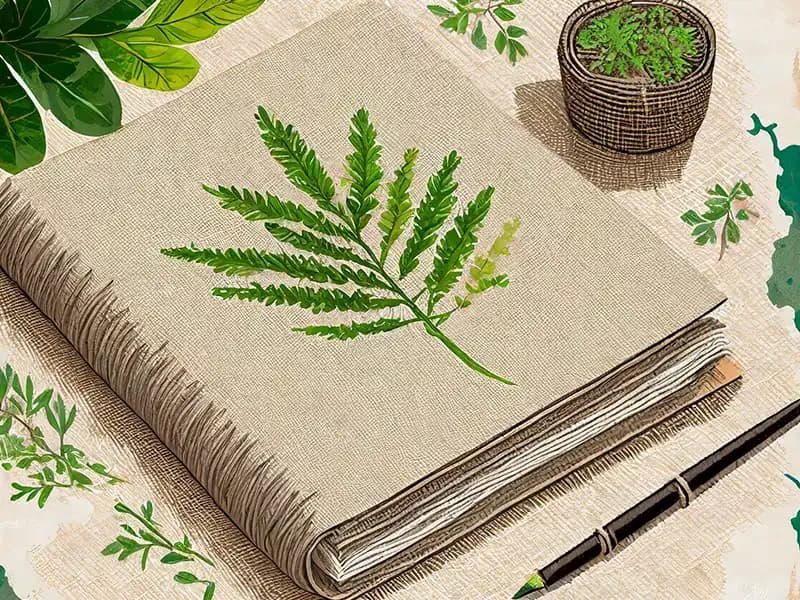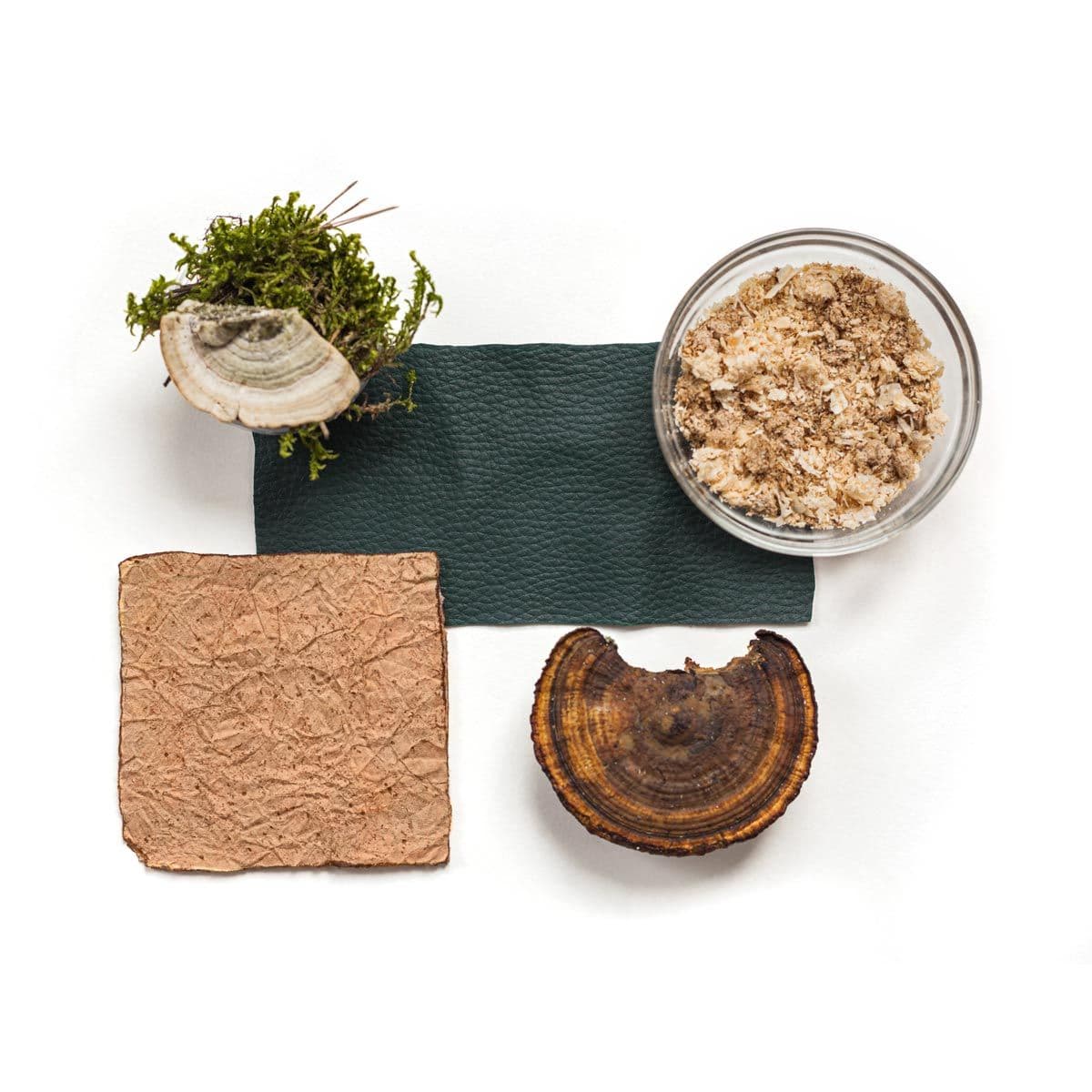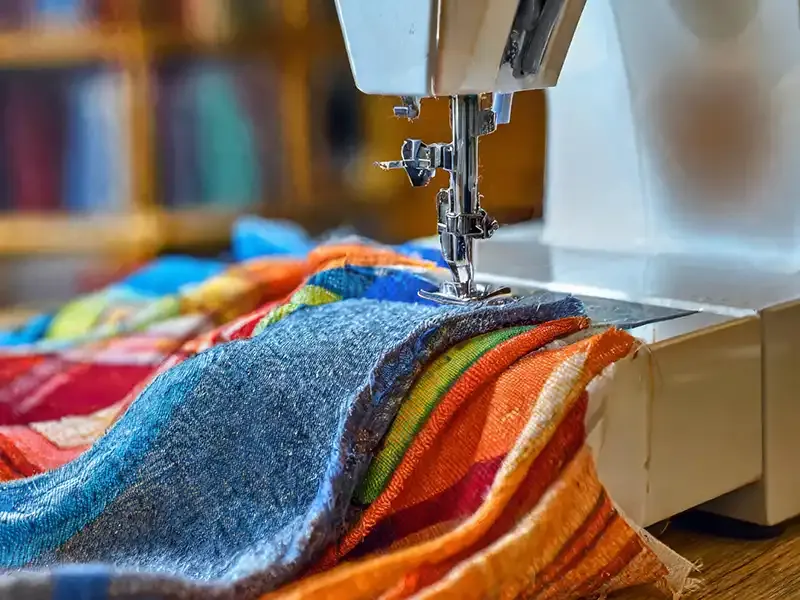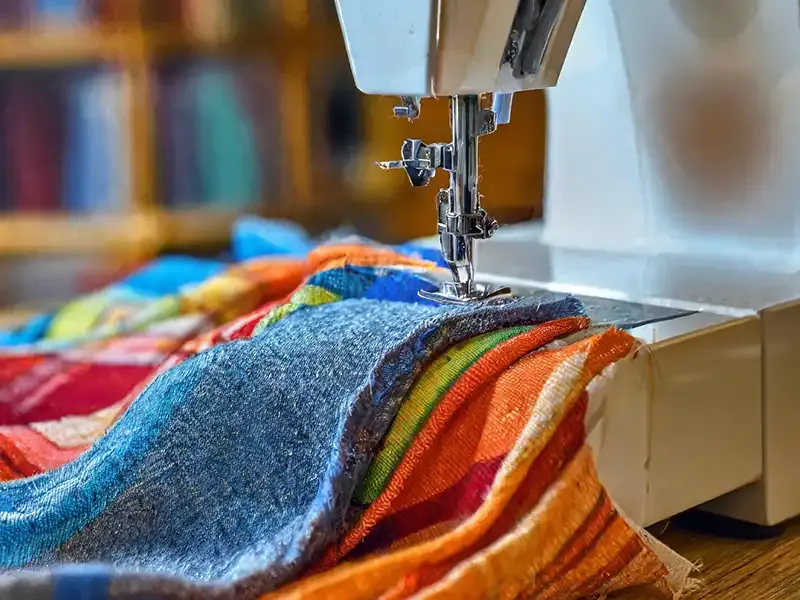Key Points
- Bast fibres resist rot, breathe, and stay strong when wet; crops grow fast with low inputs and the entire plant is usable.
- EU proximity gives consistency; linen is tightly tracked, hemp lags — NMU prepares for blockchain-level traceability.
- Product proof: hemp wick ~1,200 g/km; multi-strand yarn and tuned beeswax load deliver a steady, low-temperature burn with no microplastics.
- Colour practice favours plant dyes (tannin-to-iron “earth black”); reactive dyes only where high fastness is essential.
- Waste is designed out: pattern nesting, offcuts reused or heat-recovered, out-of-spec yarn re-roped; suppliers vetted for living wages and on-site standards.
Full interview with Natural Materials
1. Your work often begins with European bast fibres like hemp and flax. What inherent mechanical or environmental properties make these fibres ideal for scalable, sustainable applications?
Bast fibers are nature’s performance materials. Long before anyone coined the term "sustainability", people chose hemp and flax for ropes and sails because they resist rot, breathe well, and stay strong when wet. Those same properties matter today for everything from textiles to packaging.
What I love is how these fibers wear in rather than wear out. A linen shirt wrinkles, sure, but that’s the sign of a fabric that breathes and ages gracefully. Compare that with polyester: it looks crisp but sheds microplastics every wash and traps heat. Cotton has its own baggage, huge water and chemical requirements, so when you line these up side-by-side, bast fibers win on every environmental metric.
They also grow like weeds. Hemp, flax, jute, ramie, sisal, kenaf, nettle, pick your favorite. These plants shoot up fast and dense, naturally crowding out weeds so farmers can minimize herbicides. In France, for example, hemp and linen are rotated on a five-year cycle with little need for pesticides or fungicides. When you grow purely for fiber, no seed or flower harvest, you need even fewer chemical inputs.
And every part of the plant is valuable. The long outer fibers make textiles and ropes. The woody inner “shiv” or “hurd” becomes animal bedding, paper, even construction blocks. Leaves and roots can be composted or turned into soil amendments. You can quite literally use the entire plant, which makes the economics and the sustainability line up perfectly.
2. You collaborate with a wide network of EU-based spinning and weaving mills. What role does proximity, logistics, and traceability play in the consistency and sustainability of your materials?
Proximity is a quiet superpower. Europe has centuries of experience with hemp and flax. That tradition means skilled growers and mills, established infrastructure, and regional know-how you can’t fake. Shipping fiber from Asia or the U.S. just adds cost and complexity. Keeping it local keeps the carbon footprint down and makes collaboration easier.
I’m a paying member of both Polish and wider European bast-fiber associations. These networks act as a trust filter: members recommend each other, vouch for quality, and share leads on projects. When I buy hemp or linen, I need confidence that I’m actually getting what’s on the label.
Traceability is the hard part. Linen is already tightly tracked, every field and bale carries an ID, while hemp is far less formal. Mills sometimes guard their farmer relationships because that’s their competitive edge. Legislation is coming that will require more transparency, and I see blockchain or other distributed ledgers becoming standard.
That said, I don’t limit myself to Europe when it comes to natural materials. If someone in Nepal hand-twists hemp yarn sustainably, I’m interested. My personal mission is to reduce microplastics globally. Whether the fiber grew in France or the Andes matters less than whether it was cultivated and processed in harmony with the land.
3. In sourcing hemp, flax, jute, and cotton, how do you evaluate regional soil or climate conditions in relation to fibre performance, longevity, or dye uptake?
Honestly, I don’t micro-manage the agronomy. By the time fiber reaches a serious mill it has already passed a strict quality gate. If the crop isn’t up to spec, it never makes it that far.
Yes, different plants prefer different climates, cannabis thrives near the equator, flax likes cooler temperate zones, but once you have fiber-grade bast, the performance differences between Polish hemp and French hemp, or Chinese and Polish hemp, are negligible for dyeing or strength. The real selection happens at the farm and mill before I ever see it.
4. Your hemp wick product balances biodegradability with technical function. What were the specific performance requirements you had to meet, and how did the material choice address them?
With hemp wick the mission is clear: 100% natural, hemp yarn plus beeswax, while still burning like a premium lighter alternative.
Our yarn is typically about 1,200 g per kilometer, and we’ve learned that the internal construction matters as much as weight. A yarn built from many fine strands holds its round profile and compresses evenly. For example, six 200-tex strands spun together outperform three 400-tex strands, the latter tends to flatten, making waxing uneven and production slower.
Raw hemp resists burning. Beeswax solves that by adding fuel and making the yarn hydrophobic so it survives outdoor use. But the wax ratio is critical: too little and the flame sputters, too much and you waste fuel and create a sooty, unstable burn. We dial in the wax load so the wick lights reliably and burns at the steady, low temperature smokers expect.

5. Many of your products use natural dyes. Can you walk us through the decision-making process between colourfastness, ecological impact, and sourcing transparency?
I leave most production dyeing to professionals, but I’m passionate about plant-based color. One of my favorites is what I call “earth black”, a deep black created by steeping fabric in a tannin tea (from acorns or commercial tannin) and then shifting it in an iron bath. The chemistry flips the color to rich blacks and blue-grays without synthetic pigments.
Synthetic blacks, by contrast, are some of the most toxic dyes we use. Natural dyes require more care, wash gently, dry out of direct sun, but they age beautifully.
Sometimes practicality wins. For items like guitar straps that get heavy sweat and friction, we’ll use a low-impact reactive dye to guarantee color fastness. We pick our battles.
Natural fibers, wool, hemp, cotton, are inherently eager to absorb color. I even did a weekend project with my daughter, dyeing her baby blankets with avocado pits to make pink tie-dyes. That kind of slow fading and patina is part of what makes natural garments worth owning.
6. What has been the most complex technical challenge you’ve faced when prototyping plant-based textiles for mother and baby use, and how did your choice of materials help solve it?
When my wife and I had our first child, we wanted to create baby products for our own family and bring them to market. There wasn’t one dramatic technical hurdle, but we discovered the subtle realities of natural fiber production.
Bast fibers have more inertia than synthetics; they’re heavier and slightly coarser, so knitting machines must run slower. Something that takes five minutes in polyester might take seven in hemp or linen. That impacts production planning and cost.
We also needed strategic stretch for baby items, which generally means knitting rather than weaving. And we played with laser etching patterns on naturally dyed fabrics, fun work that reinforced how much character plant-based materials can hold.

7. You run on a triple bottom line model. How do you translate that into supplier qualification? What criteria are non-negotiable when onboarding new partners?
People, planet, and profit have to balance, and it starts internally: fair treatment of our own team, not just suppliers.
For partners, I want a resilient supply chain built on trust. I travel to mills, meet the teams, and yes, check the bathrooms. It sounds trivial, but how a company maintains a private space after the tour says a lot about how workers are treated when no one is watching.
I like to see long-tenured employees and subcontractors paying a true living wage. People who aren’t struggling show up better. That’s non-negotiable.
8. Your process places strong emphasis on zero or minimal waste. Could you describe how material offcuts or by-products are reintegrated, reused, or disposed of responsibly?
Waste is just lost money and energy. We design to minimize it from the start.
Offcuts become training material or product samples. Some feed our winter furnace, we run a mostly off-grid facility with natural heating and solar panels, with the grid only as backup.
We use pattern-nesting software, shifting a bag’s width by a couple of centimeters can cut scrap dramatically. Of course there’s always some unavoidable waste, selvage edges, loose threads, but we treat it as a design challenge.
When yarn falls outside our strict 1,200 g/km spec for hemp wick, we stockpile it and send it to a ropery. They spin it into ropes of different diameters, 8, 12, 20, 40 mm, for dog leashes or rope chew toys. Even when a dog eventually shreds the toy, at least it isn’t shedding microplastics.

9. Given the increased regulatory and customer demand for supply chain visibility, how are you preparing your material data to be more structured, verifiable, or certification-ready?
I’m not a farmer or a mill, so I can’t issue the certificates myself, but I’m deeply involved. I collaborate with teams building blockchain-based traceability platforms so that when legislation tightens, we’re ready.
Interestingly, hemp has no universally recognized certification today. It reminds me of organic food decades ago, everything was organic until industrial agriculture came along. Then we invented certificates to prove what used to be normal.
Many certifications function as pay-to-play clubs. I belong to hemp and linen associations for credibility and networking, but bast fibers are inherently low-impact. We don’t need a piece of paper to prove we’re avoiding petrochemicals, though I welcome transparent systems that let buyers verify our claims.
10. If sourcing platforms in future were able to instantly surface materials based on sustainability criteria, delivery time, and regional availability, what kind of structured information would you want buyers to see first when evaluating your materials?
First, clear technical specs, GSM, Tex, NM (yarn count), breaking strength, width, thickness, whatever defines performance for the product.
Second, origin clarity, “Made in Poland” or “Made in EU” matters. We’ll never compete with China on price, but European producers operate under stricter environmental and labor standards. Buyers should understand that difference and value it.
Natural fibers are seasonal. Sometimes a supplier runs out until the next harvest, so serious buyers plan a year or two ahead. Good platforms should surface that lead-time reality alongside the sustainability data.
11. What plant-based or regenerative fibres are you most excited to explore, and what technical or ecological value do you believe they’ll offer over today’s staples?
Kenaf is my newest obsession. I recently received bundles to test, and its sheer biomass output is impressive. Hemp and kenaf together could replace vast amounts of petrochemical feedstock.
Here’s the scale we’re talking about: each year we grow enough hemp and linen to cover the city of Berlin, yet we cut down enough forest for paper packaging to cover the entire country of Lithuania. That imbalance shows how urgently we need high-yield regenerative fibers.
For every field of hemp you plant, you can produce the raw material for beanies, towels, rugs, curtains, carpets, and, using the woody core, build the house itself. That’s not a thought experiment, it’s a practical roadmap.
I have a personal dream: to farm hemp myself and use the very first harvest to make every towel, rug, curtain, and blanket in my home, while the woody core, shiv or hurd, forms the walls and insulation. One harvest providing both textiles and construction materials captures exactly why I believe bast fibers are central to our future.








